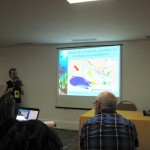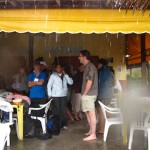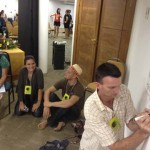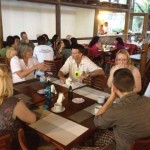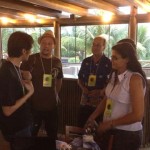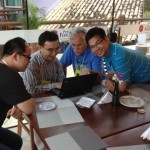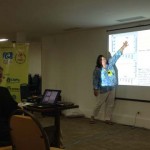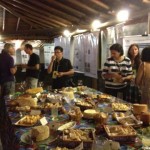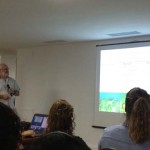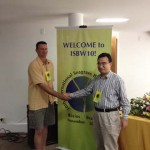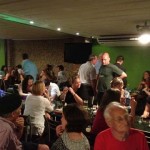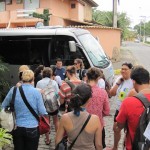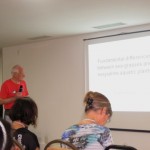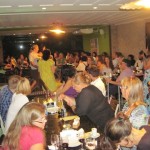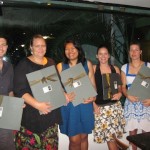It’s been almost two weeks since the end of the 10th International Seagrass Biology Workshop in Búzios, Brazil and I’ve decided to do a blog post before the memories get too fuzzy. Here’s a re-cap of what we did the last three days of the conference:
Day 3: Geting into the swing of things
We started the morning with the third plenary speaker for the Worshop, Sophie Arnoud-Haund who gave us a round-up of the state of seagrass genetics and clonality. She offered insights into clonality and how it affects conservation of seagrass meadows. This was followed by a second day of 10-minute talks with the theme of .
In the afternoon we had two workshop sessions – mapping and ecosystem services. The workshop on mapping discussed and listed the various methods used by researchers and the challenges faced when mapping seagrass – and we learnt of some pretty creative methods used for mapping and detecting seagrass like for example, strapping a camera on the back of a manatee! The second workshop was on seagrass ecosystem services which really got us thinking about the value of seagrasses and the services they provide as it required listing the services of seagrass by genera.
Day 4: Field trip Day & Poster Session
We went out to hunt seagrass on Day 4 and we were brought to a meadow of Halodule wrightii seagrass. When we got to the site, it was windy and threatening to rain, but some of us decided to brave the cold and jump right in. This enthusiasm was perhaps fueled by rumours of a seeker’s prize for the first person to find Ruppia maritima in the meadow, but despite our best efforts, I don’t think anyone managed to find it. Just as we were wrapping up, the sun came out and the weather became more of what we had hoped for for a field trip day.
We also had an evening poster session, with some very simulating discussion aided by a large spread of yummy cheeses and wine 🙂
Day 5: Wrap up and dinner!
Gary Kendrick gave the last plenary of the ISBW and gave us an overview of seagrass dispersal and connectivity. After the last session of talks and workshop, we were rewarded with a conference dinner – a buffet style affair which everyone enjoyed. The student presentation and poster awards were also given out to the top 4 oral and best poster presentation.
- Plenary Talk 3: Sophie Arnaud-Haond and the Clonality and conservation genetics of seagrass
- Getting rained out at the field trip.
- Workshop on Seagrass Mapping
- Mingling and discussion during coffee breaks
- Discussing research methods during coffee break
- Mingling and discussion during coffee breaks
- Workshop on Ecosystem Services
- Wine and Cheese at the Poster Session
- Gary Kendrick’s Plenary Talk.
- See you in China in 2014!
- Mingling at the conference dinner
- Boarding the bus for the field trip
- Professor Den Hartog’s talk
- Conference Dinner
- Best oral and poster presentations (L-R): Matt, Lina, Siti, Marjolijn & Laura.
And that concluded ISBW10 – there were some bleary-eyed farewells the next morning but in all everyone agreed that it was a successful workshop. Congratulations to Joel Creed and his team for a wonderful job done. See you guys in China in 2014! 🙂
